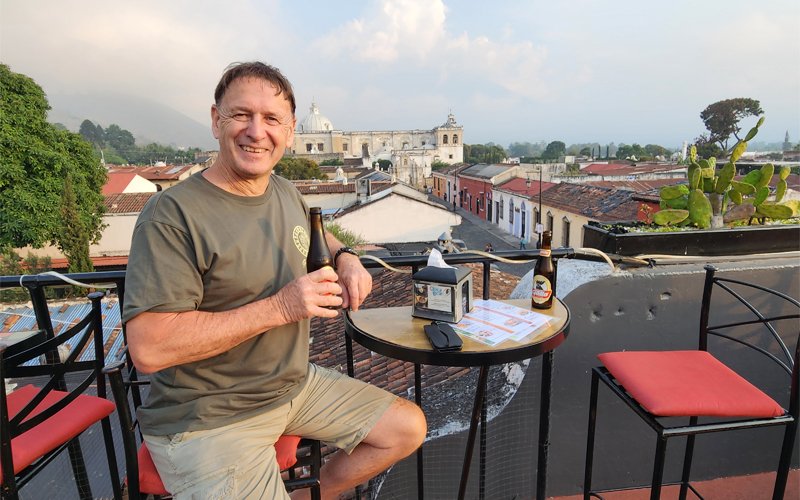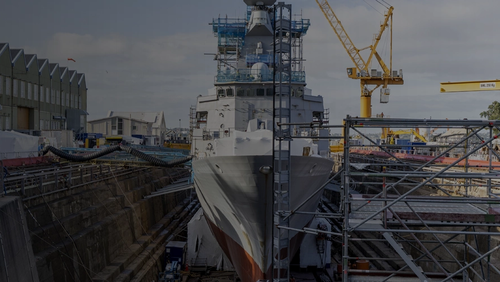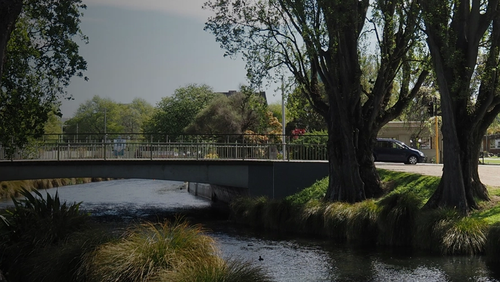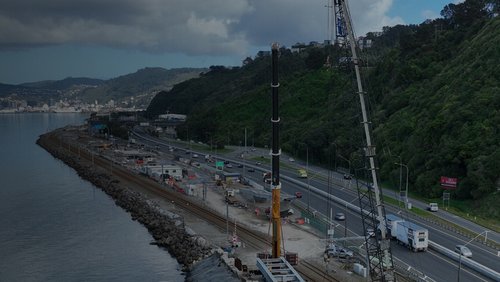15 Oct 2025
Take five with Professor Dale Carnegie, Professor of Engineering at Victoria University of Wellington, and get to know the person behind the academic leader. Find out what he learned during his sabbatical in the US, the differences in engineering education across our nations – and what resources he'd most like to bring back to education in Aotearoa.

Photo: supplied
Name: Professor Dale Carnegie
Job title: Professor of Engineering
Organisation: Victoria University of Wellington
Location: Wellington
Favourite chip flavour: Chicken
What was the aim of your sabbatical and what drew you to complete it in the United States?
I’d previously spent quite a bit of time in the USA, meeting other Engineering Deans, comparing engineering degrees (with a view to benchmarking potential new degree programmes here), sourcing students to come and study with us for a semester, and looking at the various laboratory setups.
I met several researchers in aligned areas and received an offer from a fellow Engineering Dean to host me for a semester. At the time, my hope was that I’d be able to leverage these relationships to connect with US research funding sources and further my research in search and rescue robotics, musical robotics and engineering education. However, the timing was unfortunate given the changes in the administration there and subsequent uncertainty around funding.
What did you learn during your sabbatical?
The scale of the USA really enables researchers to connect with an active community working in similar areas, something that just isn’t possible in New Zealand given our size. However, my research and study leave (RSL) visit coincided with massive (and continuing) changes in federal research funding. A significant number of research programmes were either suspended or cancelled and it felt like many of the universities were just in a “wait and see” mode, fearful of “rocking the boat” and losing federal funding.
With the specific example of my search and rescue robotics, a colleague with previous connections to the White House and National Science Foundation (NSF) funding, advised against pursuing joint research projects at this time, and instead proposed creating a start-up company. The attitude towards investment in the USA is so different to our own, and very significant start-up funding is not that difficult to attain. A significant difference is that early start-ups are encouraged and incentivised, whereas here, I feel that you have be far more advanced in your development to even contemplate creating a start-up.
It was refreshing however, to have access to a variety of researchers who have similar interests and (previously, at least) access to substantial research funding. The ability to be in the same lab as these colleagues, brainstorming new ideas and approaches, is something that just couldn’t happen here in New Zealand at our scale.
What are the key differences in engineering education between the United States and New Zealand?
Although I’m obviously biased, I think New Zealand tertiary education has many advantages over those of the USA, especially with regards the practical abilities of our graduates. The vast majority of engineering courses in New Zealand have an associated laboratory component. With only a few exceptions, the US model seems to be that a course will be entirely theoretical, with one, maybe two, separate dedicated laboratory courses per year. This means that lecture material is often taught with no practical demonstration and the lab courses – when they do exist – are only very loosely related to the material the students are currently learning in their other courses. These laboratory exercises are also often undertaken in groups, so some students are merely passive observers. Practical tasks that our students would do repeatedly, might never seen by a USA student.
Another significant difference is the reputation of the tertiary provider. Students strive to be accepted into MIT/Purdue/Cornell/Berkeley and so on. These institutions can afford to be highly selective and there is fierce pressure on high school students to perform so that they are selected into these elite providers. Once there, their courses are likely to contain significantly higher levels of mathematics than our own. Every institution I visited required their students to undertake many more mathematics courses as part of their degree than we do.
When I’ve viewed student capstone projects however (and this is only a small sample), I know that a New Zealand student would have created a vastly better practical artefact. It really is a credit to our education that we produce graduates who can be generalists and solve problems outside their direct course material.
State-to-state variation is also interesting. Texas for example, requires that there be a course in US Government Studies as a mandatory component of all engineering degrees. Many engineering programmes require a number of courses from the Humanities. Some even require certification of swimming ability. At Cornell, for example, if you can’t swim, you must take swimming courses as part of your admission! This would be a problem for me!
As a final comment, it was intriguing the “value” placed on post-graduate students, especially domestic ones. Similar to ourselves, engineering graduates are in high demand by industry, and there is fierce competition to retain domestic talent. Domestic post-graduate students universally expect not only free tuition, but also paid work, often as a Teaching Assistant. This is significant given that some of these institutions charge well over NZ$100,000 per year in tuition fees. I lament that we’re not in the position to offer similar enticements to retain our own students into post-graduate study.
Did you see and use any resources or equipment in the US that you wish you could bring back to assist your teaching in New Zealand?
Oh, so much! Especially at the elite institutions, the laboratory resources would leave any Kiwi researcher salivating! The scale of the projects is beyond anything we can imagine. One of the universities I visited was bidding on a US$1 billion project!
One innovation did really intrigue me. We’re probably all familiar with the MakerSpace concept – where people can go to a MakerSpace facility to get access to 3D printers, workshop tools and machines, laser cutters, etc. However, the University of Texas (Austin) has a portable unit! They can (and do) literally wheel this in to a course that might be in the Humanities. They talk to the students there, and in that course – right in front of them – produce an artefact relevant to what they’re studying. Rather than waiting on people to come to the technology, they are taking it out to meet them – and often to people who would never have otherwise engaged with it.
I’d love for us to have something similar, that we could take out to our schools and the wider community.
How are AI tools being incorporated into engineering education in the US?
I didn’t see much of it happening – although I’m sure some institutions/educators will be doing it. I suspect that the more progressive academics incorporate this in their own courses at an individual level. In general, I found engineering academics in the US (as in many other places around the world) to be rather conservative – favouring techniques and methodologies from a decade or more ago. For example, there was almost no engagement in moving students from hand-solving integrals and differential equations to using modern tools/AI. The text books were generally “conventional” and often would not be unfamiliar to a student from 20 years ago. There is an accommodation of modelling, but I saw little by way of incorporating AI (or even data science) into the curriculum. Part of the problem of course, is that academics don’t want to lose any existing material from their programmes in order to make way for these new courses.
What's your Engineering Envy?
My sincere Engineering Envy is for those entrepreneurs who can risk it all to see their idea be commercialised. My father was a small business owner (a panel-beater) and I’d witness him being awake at 3am worrying about his business. That's just not a skill I have.
In particular, I am in awe of the phenomenal success of OpenStar and Rocket Lab. Investment funding is notoriously difficult to obtain in New Zealand (especially compared to the USA) and yet Ratu Mataira was able to convince investors that New Zealand could develop a fusion reactor – despite seven decades of international failure and probably a trillion dollars in overall investment. Similarly, Peter Beck was able to establish New Zealand as a frontrunner in affordable satellite launches.
My envy/admiration is that not only were Ratu and Peter able to create extraordinarily successful companies, but they were able to do so in an environment where most people would never have rated their ideas to have an even remote chance of success.







